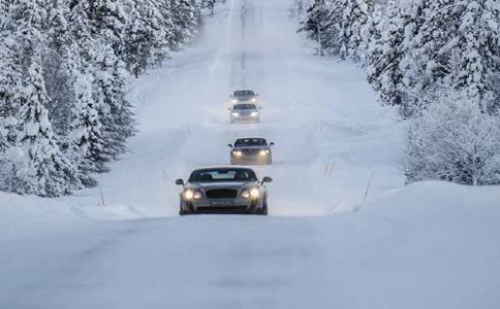Introduction: It is easy to cause ice on the road when it rains and snows in winter, but you have to leave for work. How do you drive this time? What are the possible dangers and the need to understand the points of attention?

First of all, in the presence of any danger, we must foresee in advance, look ahead at the weather forecast, observe the weather, and see if there is snow and ice on the road surface, and be consciously prepared in advance. Consider whether you can avoid driving, if you can't avoid it, then you must maintain a high degree of attention when driving.
Then, the speed on the ice should be controlled below 30~40km/h as much as possible. If we still use the four-season tires instead of the snow tires, the braking distance of 40km/h is equivalent to that on dry roads. At a distance of 70 km/h, from a speed of 40 km/h to parking, there is a braking distance of at least 20 meters. Then we have to calculate the distance from the car in front, at least 20 meters, which is probably us. Usually at least twice the distance from the car, or even longer.
At the same time, if the rear car is too close to the car, we must also make a reminder in advance. The brakes can be properly applied, and the rear brake lights will have a warning function, and double flash can be turned on to remind the rear vehicles. If there is still light rain and light snow on the road and the visibility is not high, remember to turn on the lights, low beams and fog lights of the car so that other vehicles can see ours and ensure our own safety. In addition, the interior of the car is very easy to fog, and the fog of the front windshield is also likely to affect the driving line of sight, and the defogging mode of the air conditioner can be turned on.
In the process of driving, try to make the car go straight and avoid detours. The straight line friction is the best, and it is the easiest to brake and control the car. If the road is inevitably going to take a bend, what should you pay attention to when you go uphill and downhill? First of all, it must be passed at a very slow speed, and lane change and overtaking are strictly prohibited. If it is uphill, we must use the low gear and do not shift gears at this time. Similarly, the downhill section can't coast, keep the low speed and low gear, and use the anti-braking force of the engine, slowly downhill, at this time. Can not step on the brakes.
In fact, the most common accident on the ice-covered road surface is the rear-end collision or even a rear-end collision. The culprit of the accident was the poor control of the vehicle speed and distance. They relaxed their vigilance and did not predict in advance.
There are many shapes of metal anchors, such as Y-shaped, V-shaped, T-shaped, S-shaped, etc. (see Figure 1). Metal anchors are refractory castables, refractory plastics and refractory spray coatings used to support and fix thinner liners. Which shape of metal anchor to use depends on the structure of the lining. The shape of the Ceramic Anchor is shown in Figure 2. The upper and lower ends must be flat, and the remaining 4 sides are toothed to increase the occlusal area and friction with the lining body, and play a role of suspension and support
Alloy Anchors,Y Anchors,Studs Anchors,Aluminum Alloy Anchors
Puyu kiln technology (jiangsu) CO.,LTD , https://www.anchorpy.com
![<?echo $_SERVER['SERVER_NAME'];?>](/template/twentyseventeen/skin/images/header.jpg)